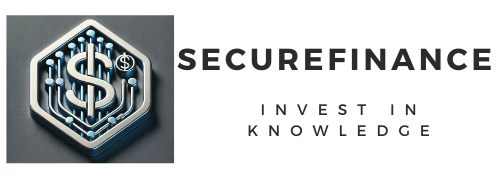
In the vibrant world of luxury resorts, where every guest experience is meticulously crafted, financial precision is just as vital. Unlike other businesses, a luxury resort operates across multiple revenue streams—accommodations, fine dining, wellness centers, exclusive excursions—all requiring thorough financial tracking. Preparing financial reports in this sector isn’t just a routine—it’s a strategic process that communicates value, builds trust, and fuels intelligent decision-making.
The financial reports for luxury resort stakeholders must go beyond mere numbers. They should narrate the story behind the figures, articulating growth, efficiency, challenges, and opportunities in a way that aligns with stakeholder interests and expectations. So, how do you do this right? Let’s dive deep.
Financial Reporting for Luxury Resorts
Financial reporting for luxury resorts involves the detailed documentation of income, expenses, profits, losses, and forecasts tailored to various stakeholder needs. It ensures accountability, transparency, and strategic clarity. While these reports share similarities with other hospitality formats, the luxury space demands more nuance—due to high operating costs, unique customer expectations, and investor pressure for profitability and brand prestige.
Luxury resorts typically attract high-net-worth investors, discerning clientele, and experienced operators. Each stakeholder is laser-focused on key performance indicators (KPIs) that signal financial health and market leadership. Hence, presenting accurate and insightful financial data is not optional—it’s a business imperative.
Importance of Financial Transparency for Stakeholders
Luxury resort stakeholders include a diverse crowd: property owners, investors, board members, governmental entities, and senior management teams. Transparency isn’t just a compliance checkbox; it is a cornerstone of sustainable growth. Clear and credible financial reports:
-
Build confidence among investors
-
Enable timely strategic decisions
-
Reduce regulatory risks
-
Promote internal efficiency
-
Foster long-term trust
When stakeholders understand the financial landscape of the resort, they’re more likely to continue investing, supporting strategic pivots, or approving capital expenditure projects.
Key Stakeholders in a Luxury Resort
Identifying stakeholders is the first step to delivering meaningful financial insights. They typically fall into the following categories:
-
Equity Investors: Looking for ROI and value appreciation
-
Owners: Focused on both financial performance and asset condition
-
Executive Management: Interested in profitability and operational metrics
-
Department Heads: Need granular financial data for daily decisions
-
Regulatory Authorities: Require compliance-focused reporting
-
Banks and Lenders: Focused on debt repayment ability
Understanding Stakeholder Expectations
Different stakeholders, different perspectives. While investors might look at EBITDA margins and net asset value, departmental managers might care more about daily occupancy rates or food and beverage cost ratios.
Thus, understanding the priority areas for each group is vital. This ensures that your reports are not just accurate—but also relevant and actionable.
Types of Financial Reports Used in Resorts
Luxury resorts typically rely on a suite of financial reports, including:
-
Income Statements: Tracks revenue, expenses, and net profit
-
Balance Sheets: Snapshot of assets, liabilities, and equity
-
Cash Flow Statements: Measures inflows and outflows over a period
-
Departmental Reports: Breakdown by units such as housekeeping, F&B, spa
-
Forecast Reports: Project future performance based on trends
Including all these in stakeholder packages ensures a holistic financial picture.
Unique Metrics in the Luxury Resort Industry
Standard financials aside, the luxury resort industry leans heavily on hospitality-specific KPIs. These include:
-
Average Daily Rate (ADR)
-
Revenue per Available Room (REVPAR)
-
Gross Operating Profit per Available Room (GOPPAR)
-
Occupancy Rate
-
Customer Acquisition Cost (CAC)
These metrics help stakeholders gauge operational efficiency, pricing strategy success, and revenue management performance.
Customizing Reports for Different Audiences
A one-size-fits-all report does no justice in this business. Customizing financial data for different audiences ensures engagement and comprehension.
-
Owners and Investors: Strategic overview, valuation trends, investment return
-
Executives: Profit centers, cost control, margin insights
-
Regulators: Tax records, statutory compliance
-
Staff: Performance dashboards
Essential Components of a Financial Report
Every report must contain:
-
Executive summary
-
Key performance highlights
-
Variance analysis
-
Budget vs. actual performance
-
Trend analysis
-
Cash position
-
Risk disclosures
Providing clear insights into these areas strengthens the report’s credibility.
Monthly vs. Quarterly vs. Annual Reporting
Each reporting cycle has its role:
-
Monthly Reports: Ideal for operational tracking
-
Quarterly Reports: Suited for performance reviews
-
Annual Reports: Required for audits, tax filings, and investor meetings
Best Practices for Accurate Bookkeeping
Without robust bookkeeping, reports are just educated guesses. Here’s how to ensure quality:
-
Implement double-entry accounting
-
Use automated accounting software
-
Reconcile accounts regularly
-
Maintain detailed audit trails
Integrating Operational Data with Financial Data
One of the smartest moves a luxury resort can make is merging operational KPIs with financial data. This could mean linking spa treatment bookings with daily revenue, or aligning housekeeping hours with labor costs.
Software Tools for Resort Financial Reporting
Modern luxury resorts leverage software like:
-
Opera PMS
-
QuickBooks Enterprise Hospitality
-
Sage Intacct
-
SAP Business One for Hospitality
-
Microsoft Power BI
These tools offer automation, real-time analytics, and stakeholder-friendly dashboards.
Leveraging Cloud-Based Reporting Solutions
Cloud-based platforms ensure:
-
Real-time access for remote stakeholders
-
Centralized data storage
-
Enhanced data security
-
Easy scalability
Especially crucial for resort chains operating in multiple locations.
Forecasting and Budgeting Strategies
Stakeholders value resorts that think ahead. Strong forecasting includes:
-
Scenario planning
-
Sensitivity analysis
-
Rolling forecasts
-
Zero-based budgeting
Visualizing Data for Greater Impact
Graphs, pie charts, and dashboards simplify complex data. Whether it’s a heatmap of seasonal bookings or a line chart of revenue trends, visuals make data more digestible.
Legal and Regulatory Considerations
Reports must adhere to:
-
Local tax laws
-
International Financial Reporting Standards (IFRS)
-
Hospitality-specific legislation
Ignorance here can be costly—both financially and reputationally.
Handling Foreign Currency and International Guests
Luxury resorts often cater to global clientele. This introduces complexities like:
-
Real-time currency conversion
-
Exchange rate gains/losses
-
Multi-currency accounting
Sustainability Metrics in Financial Reports
Modern stakeholders want to see eco-conscious practices in financial terms. Track metrics like:
-
Energy cost per room
-
Waste management spending
-
ROI on green investments
Preparing for Stakeholder Meetings
Before presenting financials, prepare:
-
A concise slide deck
-
Summary dashboards
-
Key insights and anomalies
-
Actionable recommendations
Internal Controls and Financial Audits
Internal audits protect stakeholder interests. Strong internal controls include:
-
Segregation of duties
-
Audit trails
-
Authorization hierarchies
Managing Seasonality in Financial Reports
Luxury resorts often face off-peak and peak seasons. Report comparisons should normalize for seasonality, showcasing year-over-year improvements rather than raw fluctuations.
Case Study: Successful Resort Financial Reporting
The Aman Resorts group provides a great example of transparent financial communication. With custom dashboards, monthly variance reports, and sustainability metrics, they’ve set the bar for stakeholder engagement.
Pitfalls to Avoid in Financial Reporting
Avoid:
-
Overloading stakeholders with data
-
Hiding key financial problems
-
Delaying reports
-
Ignoring qualitative insights
Tips for Aligning Reports with Strategic Goals
Ensure reports reflect progress toward long-term goals:
-
Expansion plans
-
Brand reputation enhancement
-
Guest satisfaction
-
Market share increase
Future Trends in Resort Financial Reporting
Coming soon:
-
AI-driven predictive analysis
-
Blockchain for audit trails
-
Integrated ESG financial statements
Luxury resorts must stay ahead of these trends to impress stakeholders.
Financial reporting for luxury resort stakeholders isn’t just a task—it’s a narrative, an engagement strategy, and a critical leadership function. Done right, it turns data into direction and numbers into decisions. By blending accuracy with storytelling, luxury resorts can elevate their brand, deepen stakeholder trust, and secure long-term success.
YouCan Also Read : How to Secure Funding for Your Luxury Resort Project
FAQs
How do luxury resorts manage complex revenue streams in reports?
They use segmental reporting, breaking down income by departments—rooms, dining, spa, and events—while allocating shared costs proportionally.
What software is best for luxury resort financial reporting?
Opera PMS, QuickBooks Enterprise, and Power BI are among the top tools offering detailed, tailored insights.
Why do luxury resort stakeholders care about non-financial KPIs?
Because metrics like customer satisfaction, occupancy, and ESG scores impact brand value and long-term profitability.
What is the difference between REVPAR and GOPPAR?
REVPAR focuses on revenue per room, while GOPPAR considers overall profitability, making it more comprehensive for stakeholders.
How do resorts handle multi-currency transactions in reports?
By using software with real-time currency conversion and detailed foreign exchange gain/loss tracking.
What role does visual reporting play in stakeholder engagement?
It makes complex data easily digestible and enhances clarity, especially for non-financial stakeholders.
